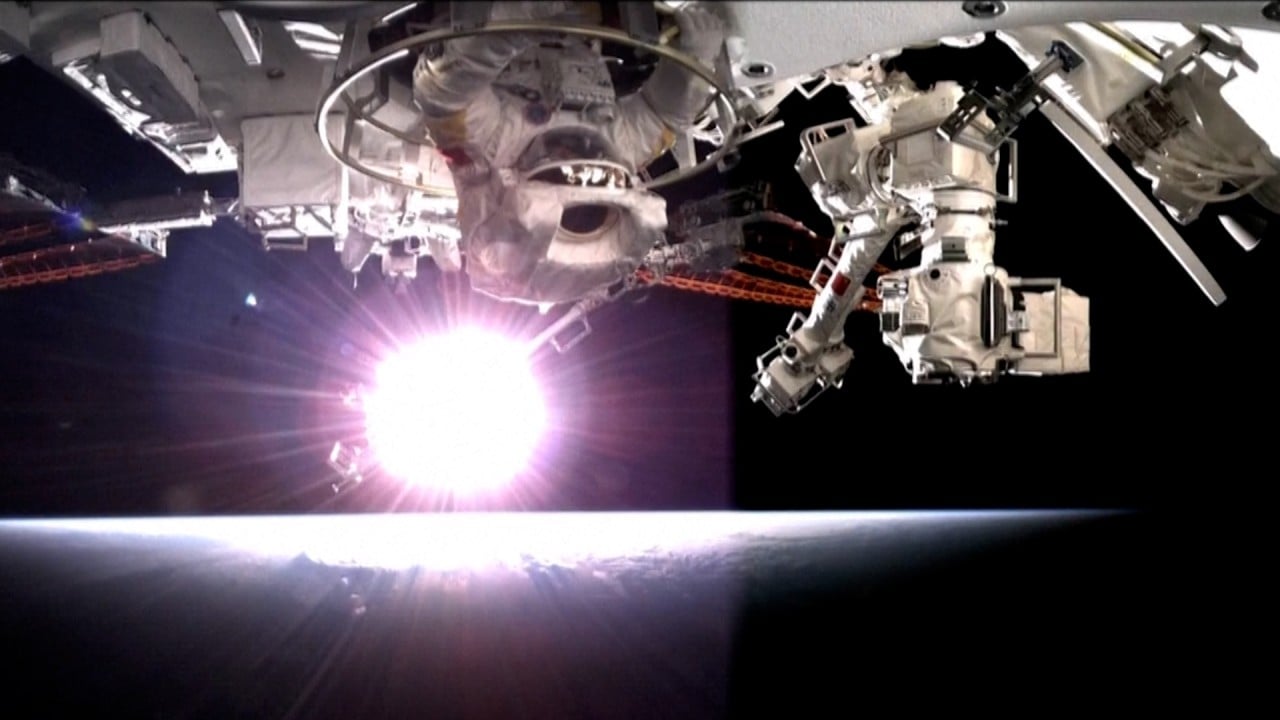
Taikobot, China’s flying humanoid robot, is ready to ease the workload from astronauts in space station
- Chinese social media is captivated by space-age robot could help hold tools, deliver packages and other tasks to aid humans in space
- Taikobot has advanced sensors and cameras, allowing it to perform tasks autonomously, and can navigate the cabin with stability
Taikobot is as tall as an adult but weighs the same as a child and has advanced sensors and cameras, allowing it to perform tasks autonomously.
The work is led by Zhang Qi, a professor at the National University of Defence Technology, in cooperation with Zhejiang University professor Zhang Yulin. Zhang Yulin is also former deputy commander-in-chief of China’s manned space flight programme.

Photos of the bot have been trending on social media platforms such as Weibo and Twitter recently after the team’s paper was published in the international peer-reviewed journal Machines in October.
“Our Taikobot is capable of stable in-cabin navigation, robust astronaut detection and tracking, plus skilful object manipulation,” Zhang Qi said in the paper. “Taikobot has the ability to manipulate a set of tools and interfaces designed for human beings.”
Zhang Qi and his team carried out ground experiments inside a space station mock-up, where the robot could hold and manipulate a hammer and an electric screwdriver with one hand and transport a 2kg package with its dual-arm system under Earth’s gravity. When working with astronauts, Taikobot can help deliver tools and hold the tools returned.
Unlike ground-walking robots on Earth, Taikobot has a novel movement strategy that mimics how humans move in space. This whole-body joint control is named PFP and can be divided into three sub-processes: push-off, flight and parking.
In the push-off stage, Taikobot jumps against the wall, which gives it initial speed towards the target location. Flight is when the robot approaches its target while possibly carrying tools or cargo, making corrections in the air to stay on course.
Parking involves stable whole-body docking for subsequent operations, achieved by grasping handrails or using a wall to slow down. Once Taikobot reaches the target location, it grasps a handrail or fixes its feet into foot restraints and switches to docking mode.
Robonaut2, which was developed by Nasa and General Motors in 2011, imitated human upper body and is confined in mobility. Kirobo from Japan is a tiny chatbot designed to reduce astronauts’ loneliness.

Taikobot weighs about 25kg (55lbs). All its joints are driven by lightweight units, while the tactile sensors on hands ensure movements are precise. Taikobot moves more freely and is light, which reduces the launch cost and improves safety during human – robot collaboration.
Taikobot was designed in the shape of a human to perform tasks and operate instruments that are designed for humans.
However, on Wednesday users on Weibo questioned the logic of keeping to the human shape: “Those legs seem to be useless at zero gravity, designers should let their imagination run wild and refer to the shape of spider, starfish or gecko.‘’
Some also say the robot’s appearance reminds them of Ultraman superhero characters that fight monsters.
While robots such as Taikobot can be expensive to develop and maintain, and there is a risk of technical malfunction or error, researchers believe they have the potential to revolutionise space exploration.
With their advanced sensors and cameras, as well as their ability to perform tasks designed for human use, these robots could help astronauts explore space more efficiently and safely.
“At present, the development of Taikobot is still in the validation phase,” Zhang Qi said in the paper.
“The research and experiments in this paper will provide valuable data for the actual on-board deployment of the robot.
“In the near future, space robotic assistants like Taikobot will certainly play an important role in the never-ending process of space exploitation and utilisation.”



